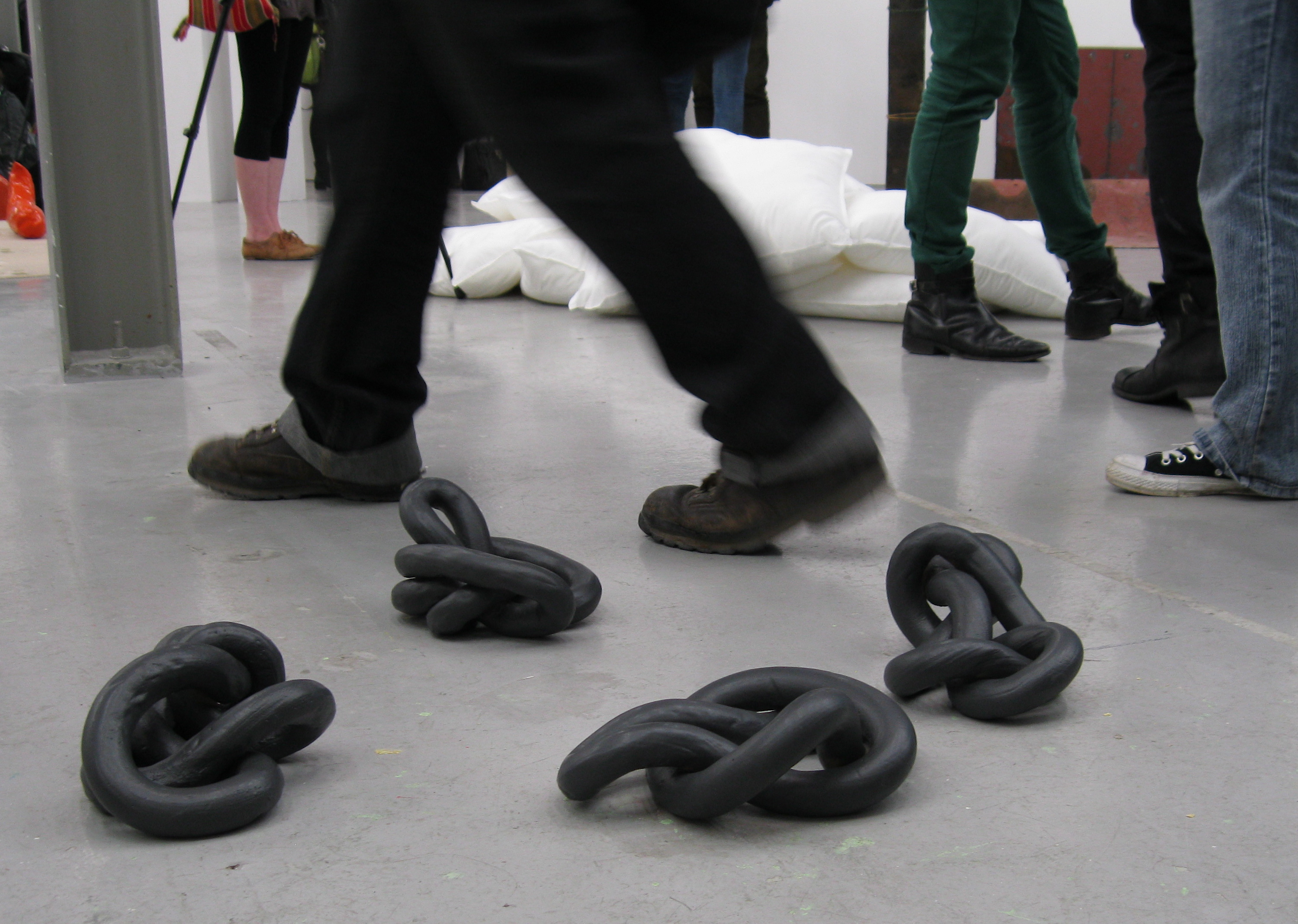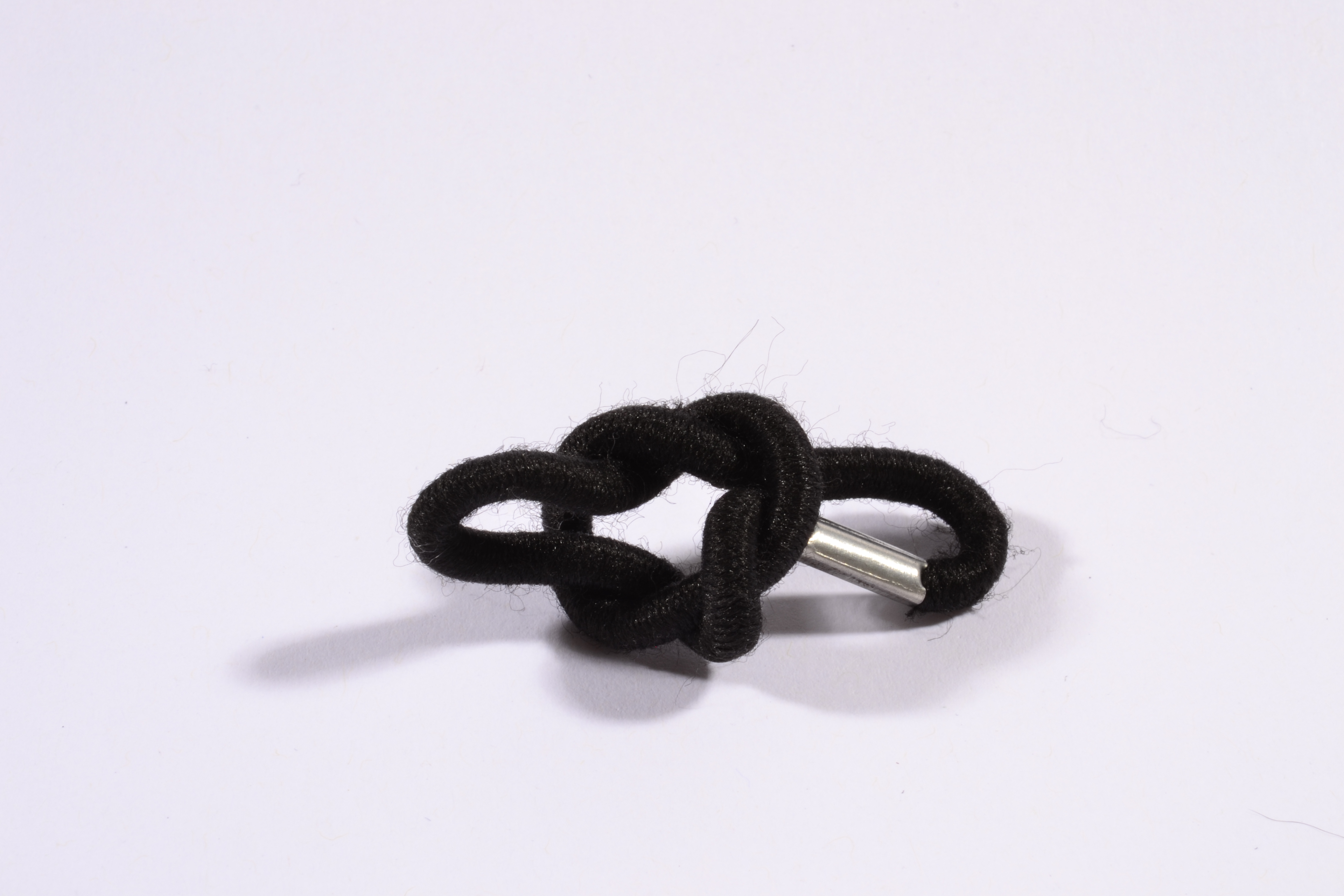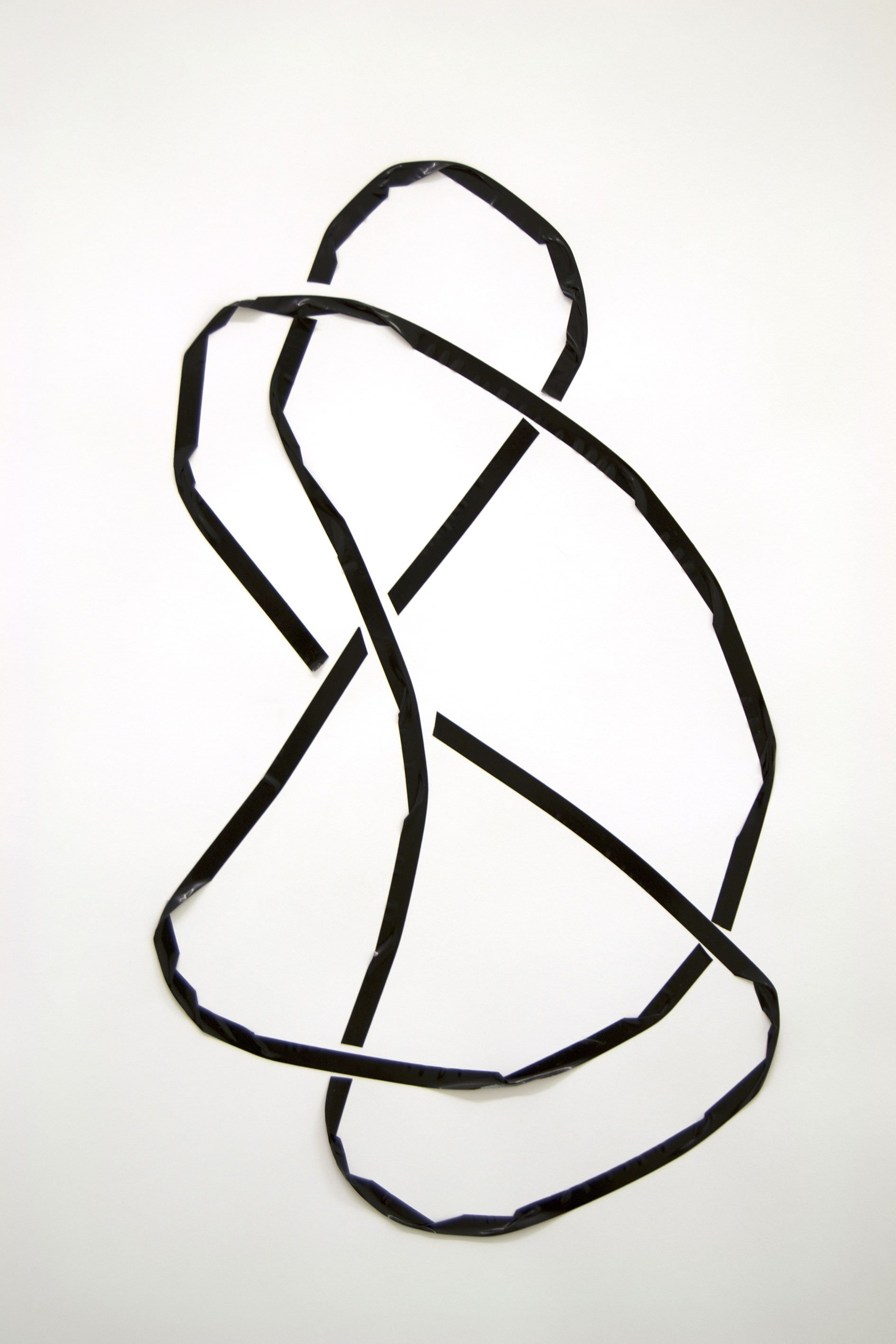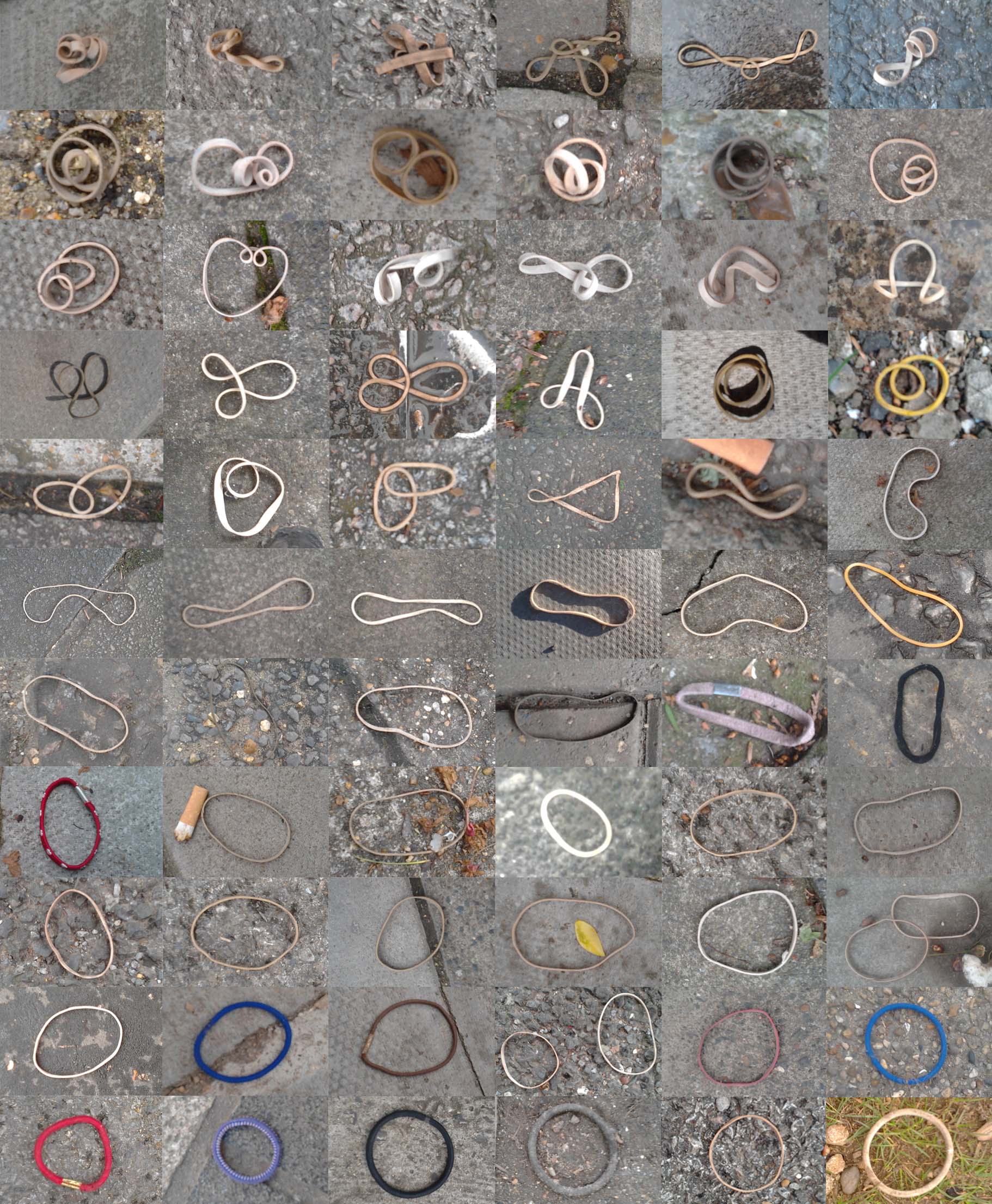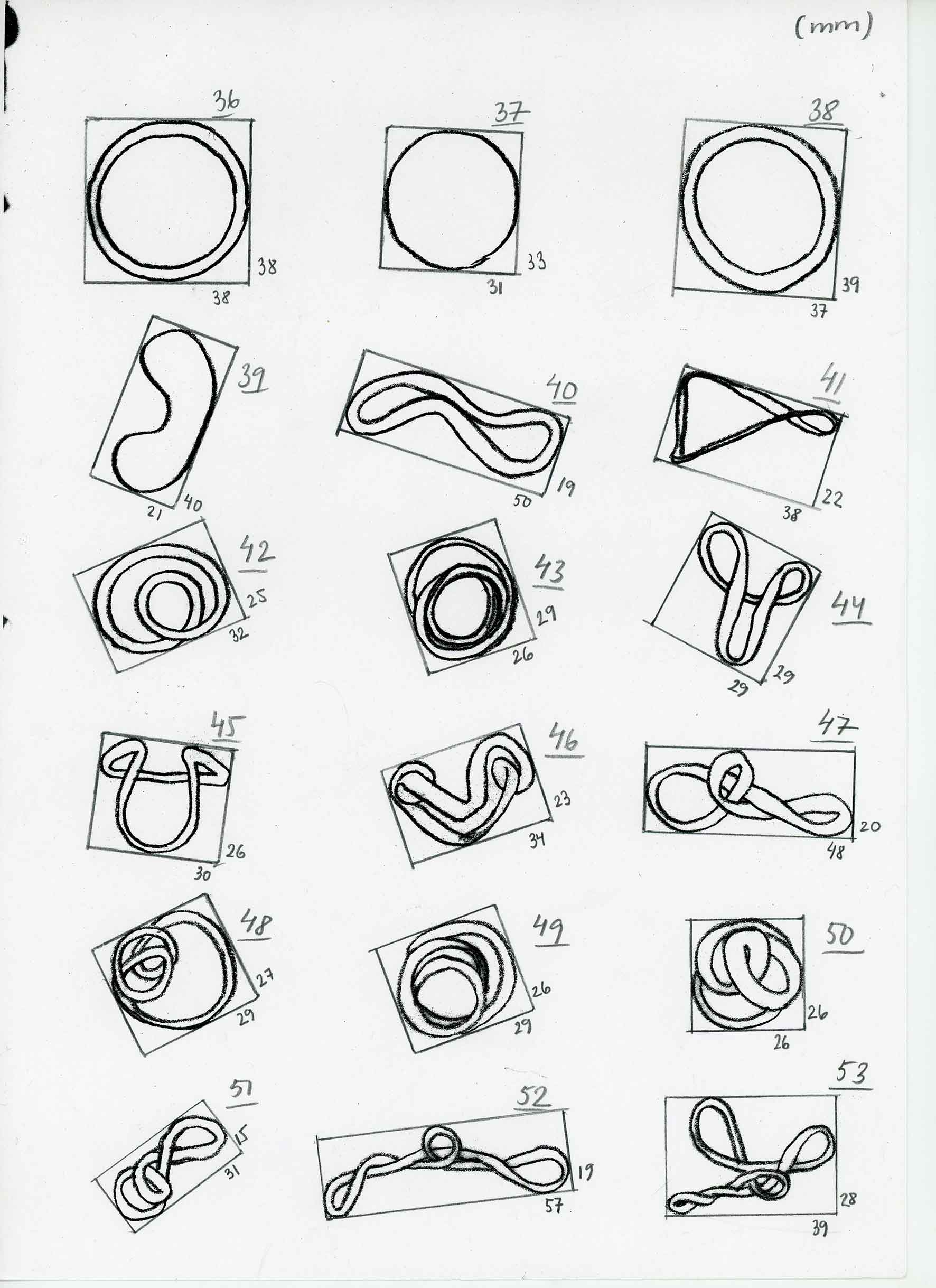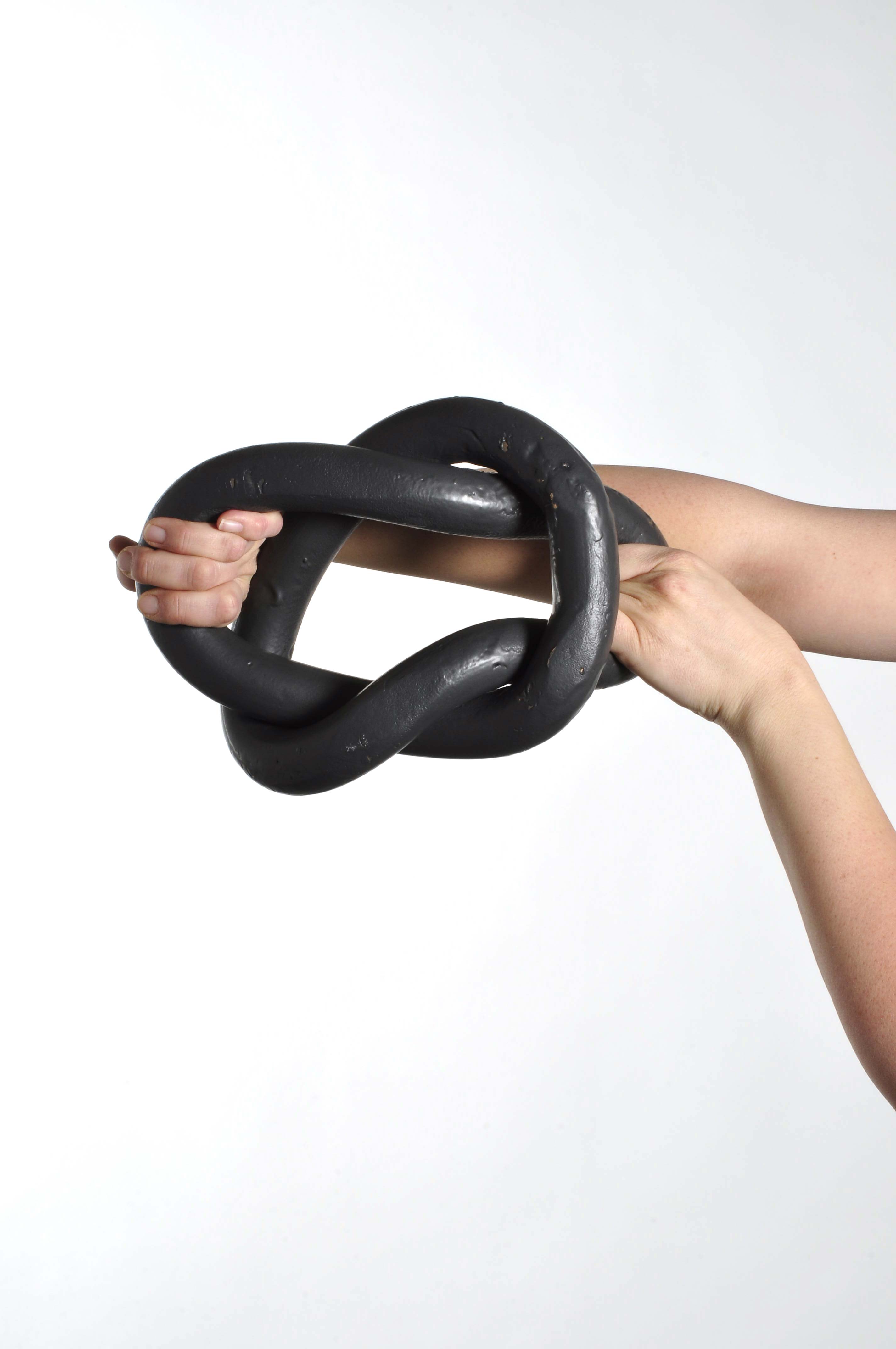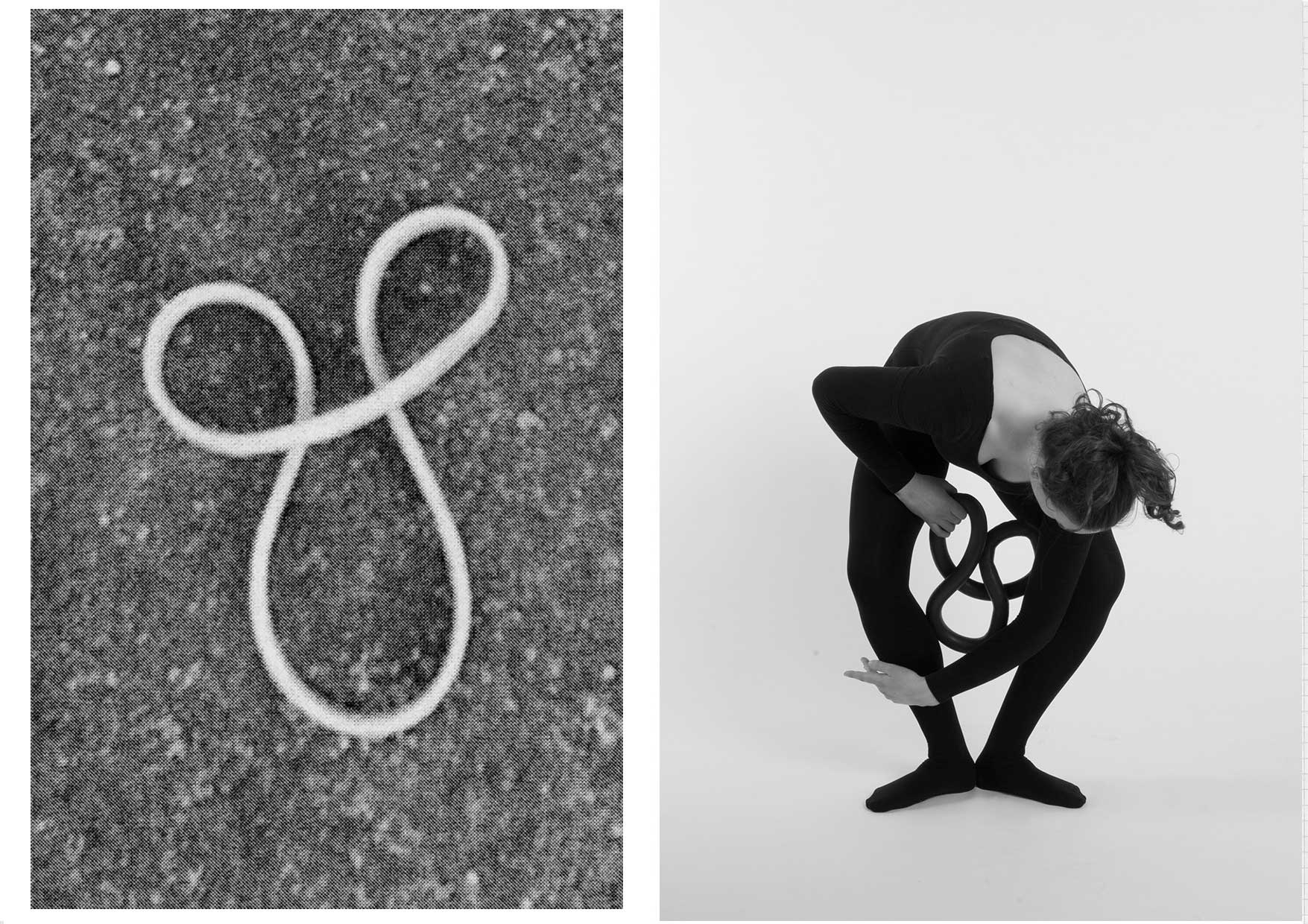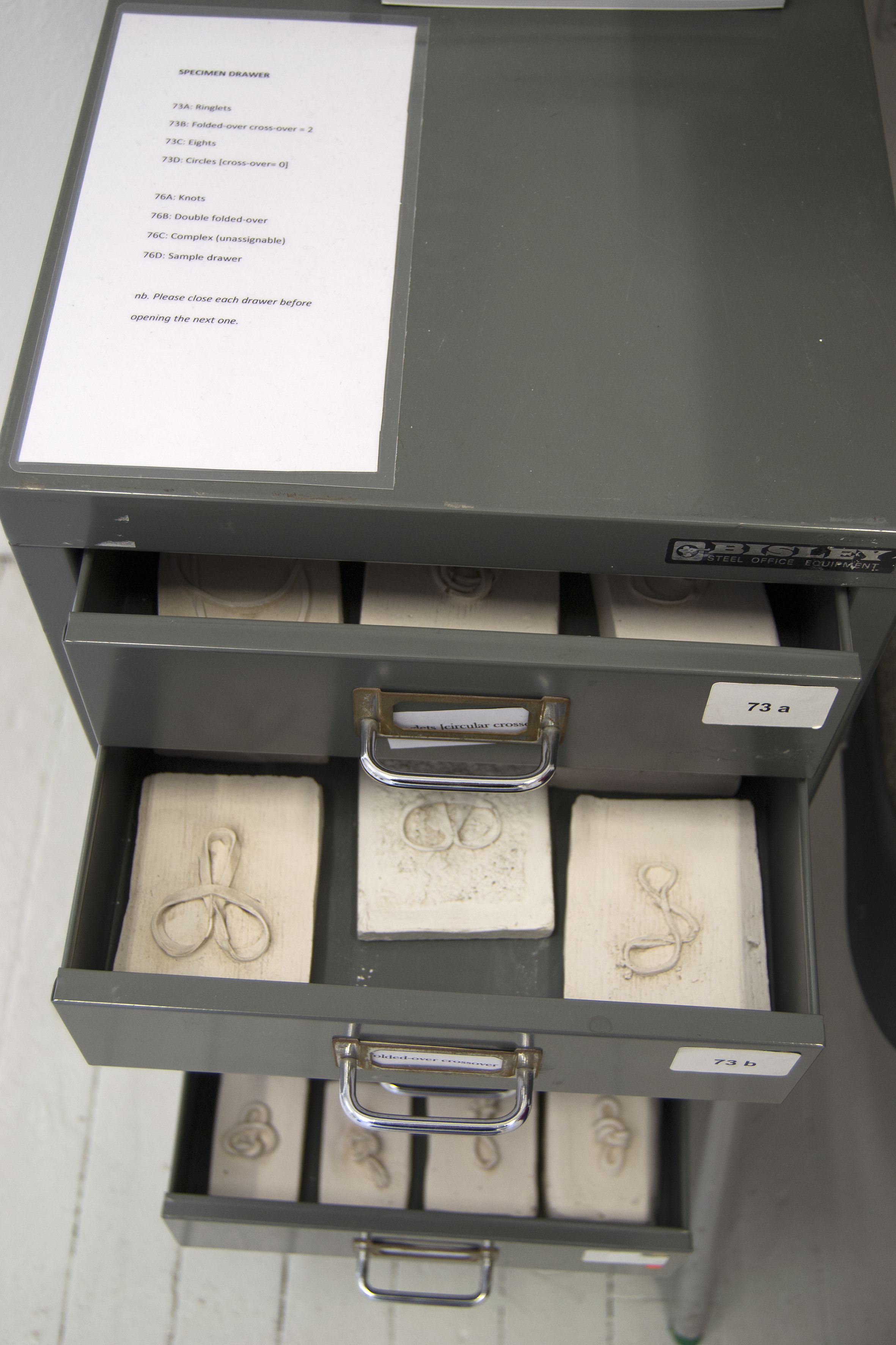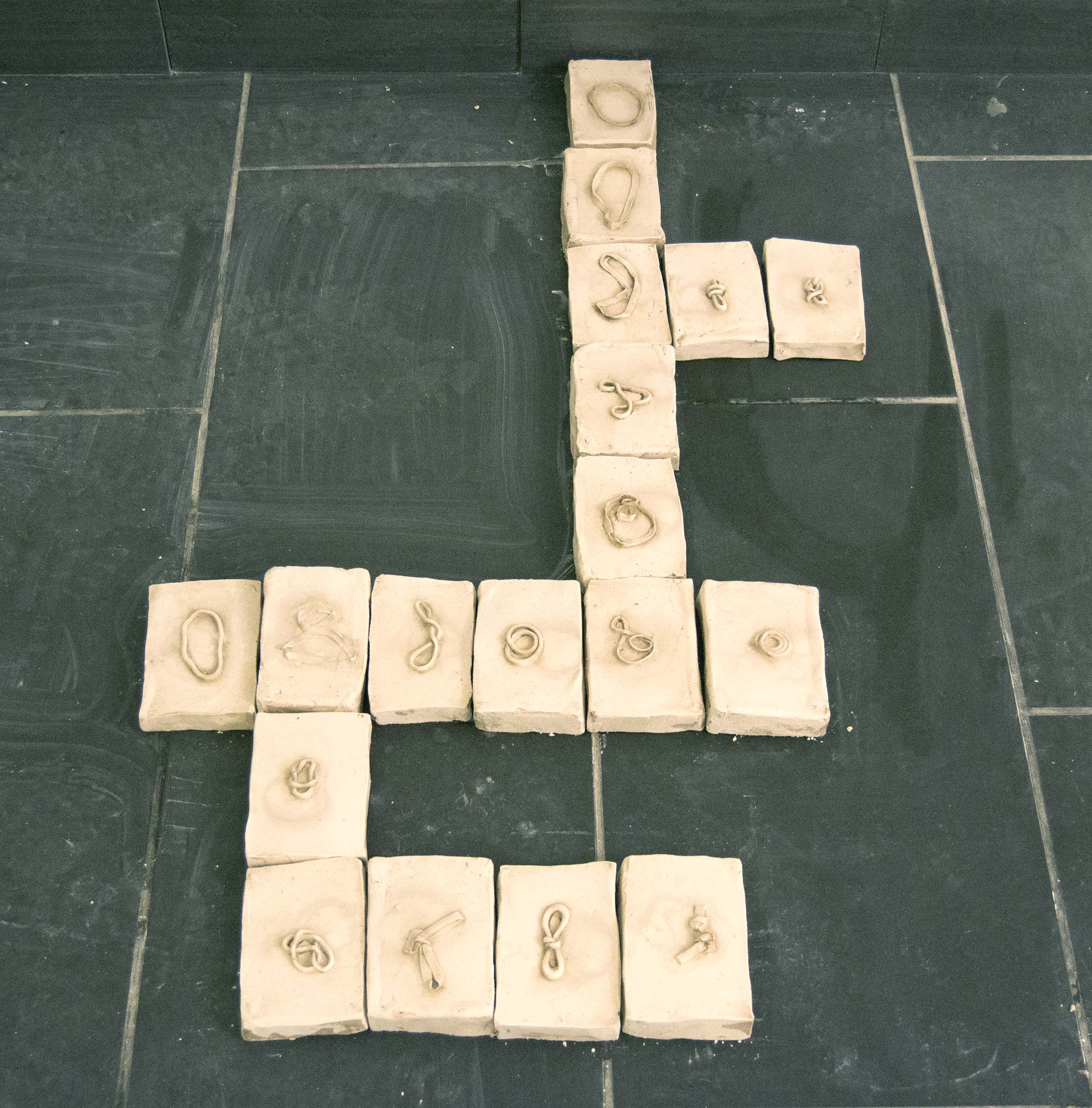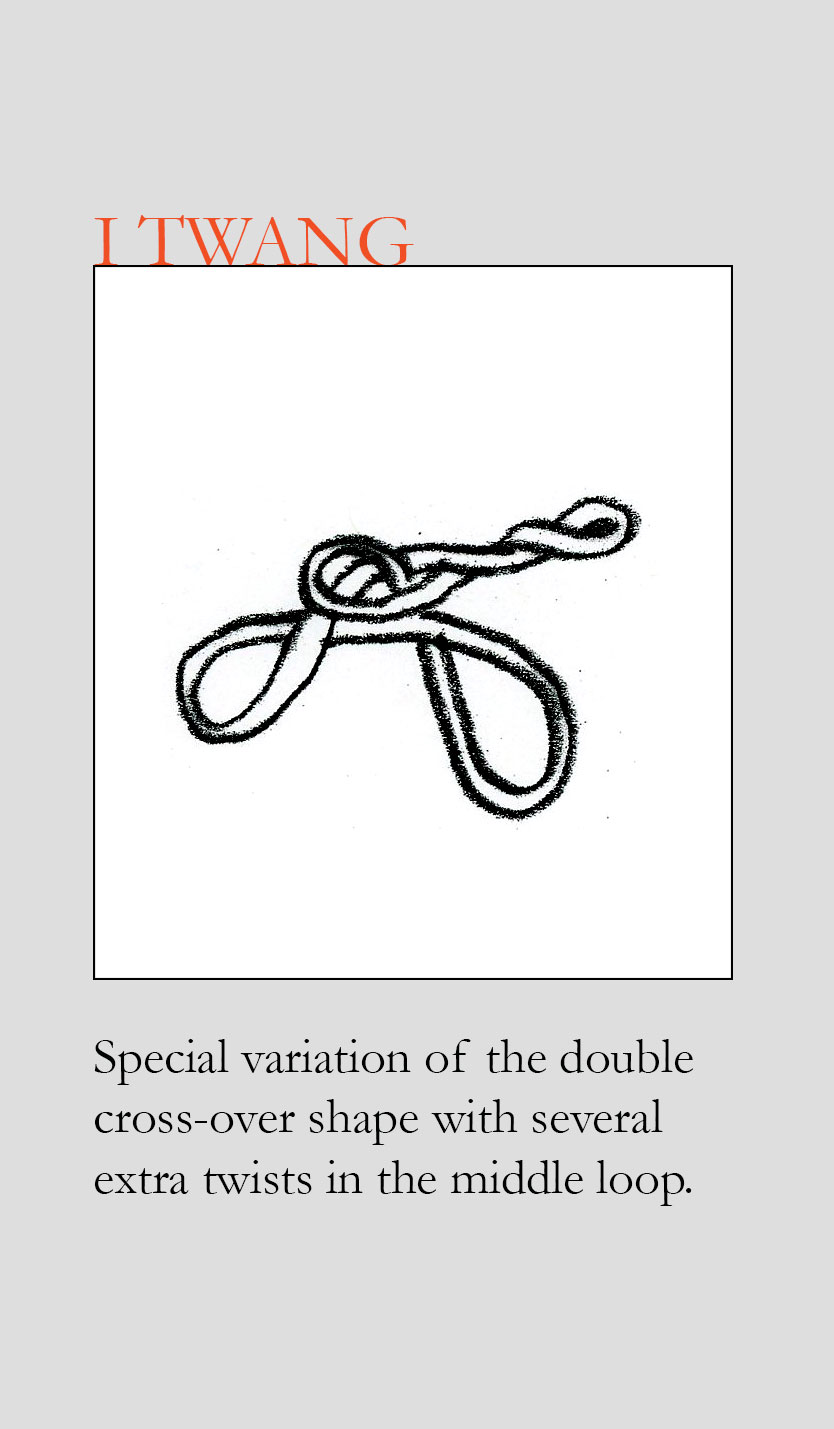I spent a lot of time looking at the knots in elastic bands. It is fascinating how something so ubiquitous and therefore invisible can become interesting and even beautiful when paying close attention.
I became interested to see if I could discover something new if I kept investigating it using different systems, different viewpoints. I was hoping to glimpse something behind the words and definitions that tend to frame what we see.
It became an investigation of various ways to describe something – to use language, in the wider sense of language. Of course, the elastic band forms are very graphic, symbolic-looking shapes, which is possibly what put me on the path of this particular journey.
Ceramic enlargement of loops
Photographic study of elastic bands (part of series)
Knot diagram, tape on wall
Field study, organised after shape (part of book “The Study of Hairbands”, edition of 50)
Field study, drawn and measured (part of book “The Study of Hairbands”, edition of 50)
Performer with ceramic bands
Performer with elastic bands (performer Lauren Pennycott)
Archive of plaster casts of found elastic bands, sorted after shape
Plaster casts, arranged into a kind of evolution of shape
I Twang, card pack with elastic band shapes used for future telling performance. Using the symbolic, graphic look of elastic bands, I asked visitors to take the shape of a found or thrown elastic band as a form of message of cosmic advice.
Semi-semiotics, a record of the result when asking visitors to the Nunnery gallery to hold an elastic band any way they wished – arranged into an imaginary choreography.
